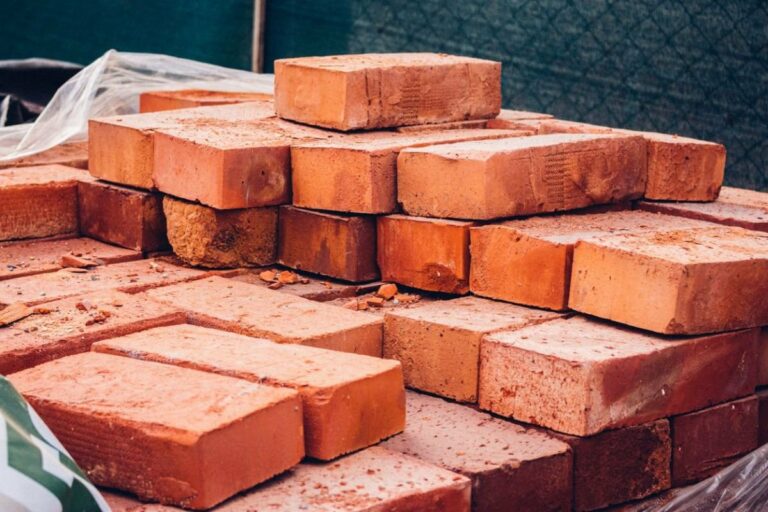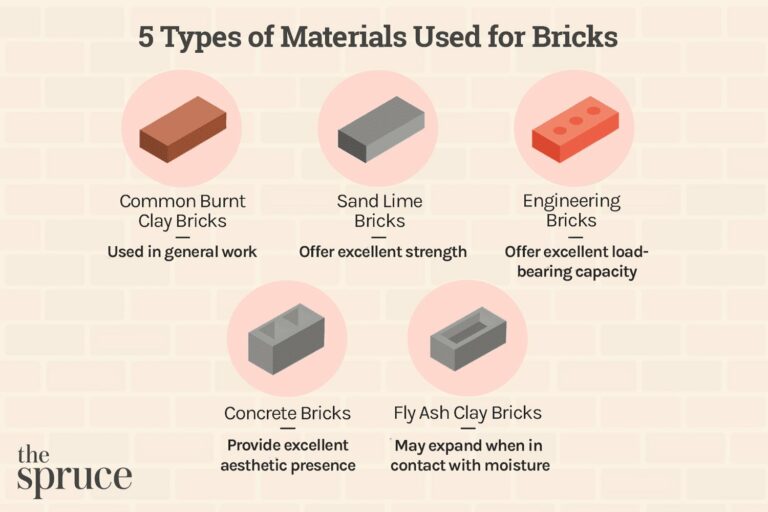How To Make Mud Bricks: A Step-By-Step Guide
Today we discuss How To Make Mud Bricks. Are you interested in constructing something durable and eco-friendly? You can make your own mud bricks easily.
Follow a few straightforward steps to craft long-lasting bricks. In this blog post, we will walk you through the process of creating mud bricks, giving you all the essential details to begin. Let’s explore the technique of making mud bricks!
How to Make Bricks from Mud:
For millennia, bricks have served as a fundamental construction material, with mud bricks being among the earliest known types. Crafting bricks from mud is a straightforward and environmentally-friendly process, yielding sturdy and sustainable building components. This detailed guide will lead you through the process of creating mud bricks, outlining essential techniques, materials, and factors to consider.
Gathering the Right Materials:
Before you start making bricks from mud, it’s important to gather all the necessary materials. Here’s a list of items you will need:
- Clayey soil
- Sand
- Water
- Straw or other binding material
- Wooden molds or frames
- Tarpaulin or plastic sheets
- Shovel or spade
- Wheelbarrow or mixing container
- Trowel or bricklaying tool
Preparing the Mud:
The first step in making bricks from mud is to prepare the mud mixture. Follow these steps:
- Find a suitable location for your brick-making process. Look for an area with adequate space and access to water.
- Collect clayey soil from a nearby source. Ensure that the soil is free from organic matter and large stones.
- Crush any large clumps of soil and remove debris using a sieve or mesh.
- Add sand to the soil mixture. The sand helps to improve the bricks’ strength and reduce shrinkage.
- Mix the soil and sand thoroughly, ensuring they are evenly distributed.
- Add water gradually to the mixture, while continuously turning and mixing the soil. The aim is to achieve a sticky and malleable consistency.
Adding Binding Material:
To enhance the strength and stability of the mud bricks, you can add a binding material such as straw. Follow these steps:
- Soak the straw in water for a few hours to make it pliable.
- Remove excess water from the soaked straw and chop it into small pieces.
- Add the chopped straw to the mud mixture and knead it thoroughly to ensure even distribution.
- Continue mixing until the straw is completely integrated into the mud.
Molding and Shaping the Bricks:
Once the mud mixture is ready, it’s time to mold and shape the bricks. Follow these steps:
- Prepare the wooden molds or frames by cleaning and coating them with a thin layer of oil or water.
- Fill the mold with the mud mixture, ensuring it is evenly distributed and leveled.
- Pat the top surface of the mud-filled mold to smoothen it out.
- Leave the brick in the mold for a short period, allowing it to set and solidify.
- Carefully remove the mold, leaving the molded brick on a flat surface.
- Repeat the process to create more bricks, ensuring that each brick has sufficient time to dry before removal.
Drying and Curing the Bricks:
After shaping the bricks, they need to be properly dried and cured to strengthen them. Follow these steps:
- Place the molded bricks on a flat surface in a shaded area to dry. Avoid direct sunlight as it can cause cracks.
- Allow the bricks to air dry for a week or two, depending on the weather conditions.
- Flip the bricks periodically during the drying process to ensure even drying and prevent warping.
- After the bricks have dried sufficiently, move them to a well-ventilated location for curing.
- Cover the bricks with tarpaulin or plastic sheets to protect them from rain or excessive moisture.
- Allow the bricks to cure for at least two to three weeks to strengthen and harden.
Building with Mud Bricks:
Once your mud bricks are fully cured, they are ready to be used in construction projects. Here are a few considerations when using mud bricks:
- Ensure that the foundation or base for your structure is strong and stable.
- Use a mud mortar mixture to bind the bricks together while constructing walls.
- Apply a protective coating or render to the mud bricks to enhance their longevity and resistance to weathering.
- Consider incorporating mud bricks with other building materials to create unique and aesthetically pleasing designs.
Mud Brick Benefits and Sustainability:
Making bricks from mud offers several benefits and is a sustainable construction method. Here are some key advantages:
- Mud bricks are inexpensive, making them an affordable choice for construction projects.
- Using locally sourced materials reduces transportation costs and environmental impact.
- Mud bricks have excellent thermal properties, providing natural insulation and reducing energy consumption.
- These bricks are biodegradable and have a minimal carbon footprint, promoting environmental sustainability.
Faqs for How To Make Mud Bricks:
What is the process of making bricks from mud?
Making bricks from mud involves a simple process known as adobe brick making. First, the mud is prepared by mixing it with water until it reaches a pliable consistency. Then, the mixture is shaped into brick molds, either by hand or using a brick-making machine. The molded bricks are left to dry in the sun, allowing the water to evaporate. Finally, the dried bricks are stacked and baked in a kiln or bonfire, which hardens them and makes them ready for use.
What type of mud is required for brick making?
For making bricks from mud, a specific type of clay-based soil known as “clayey soil” or “loamy soil” is required. This type of soil has a suitable composition, including a good proportion of clay, silt, and sand. The clay content in the soil is essential for the bricks’ binding properties, ensuring they hold their shape when dried and fired.
Can mud bricks be made without using a brick-making machine?
Yes, mud bricks can be made without using a brick-making machine. The traditional method involves hand-molding the mud mixture into brick shapes. This can be done by pressing the mixture into molds or constructing individual bricks by hand. Although a machine can streamline the process and increase efficiency, it is not necessary for making mud bricks.
How long does it take for mud bricks to dry?
The drying time for mud bricks depends on various factors such as weather conditions, sunlight exposure, and the thickness of the bricks. Generally, it takes around 7-14 days for the bricks to dry completely. However, this can vary and it is important to ensure the bricks are thoroughly dry before using or firing them in a kiln.
Can mud bricks be used for construction?
Yes, mud bricks have been used for construction purposes for thousands of years. They offer several advantages such as good insulation properties, natural availability, affordability, and sustainability. Mud brick structures can be seen in various parts of the world, and they continue to be a viable and eco-friendly option for building houses, walls, and other structures.
Do mud bricks need to be fired in a kiln?
Firing mud bricks in a kiln is an optional step that can further enhance their strength and durability. It involves baking the dried bricks in high temperatures, usually between 900-1,200 degrees Celsius (1,650-2,200 degrees Fahrenheit). This firing process, known as “burning,” hardens the bricks and increases their resistance to weathering and water absorption. However, if kilns are not available, sun-dried mud bricks can still be used, although they may be more suitable for structures not exposed to heavy rainfall.
Final Thoughts
making bricks from mud is a simple and cost-effective process that can be easily carried out. By following the step-by-step instructions outlined in this article, anyone can successfully create durable and sturdy bricks for various construction projects. The key elements involved in the process include sourcing the right type of soil, preparing the mud mixture, and molding the bricks. With proper curing and drying, these mud bricks can be used for building walls, houses, and even sustainable structures. So, if you are looking for an eco-friendly and affordable alternative for construction materials, learning how to make bricks from mud is a practical solution.



